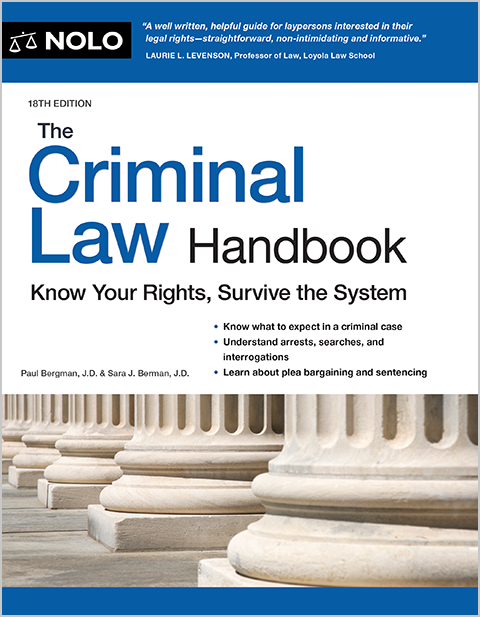Learn about the five steps in the disability determination process for SSDI or SSI benefit claims.

When you apply for Social Security disability benefits, the Social Security Administration (SSA) wants to know whether your medical disorder is severe enough for you to qualify for benefits. To determine this, the SSA will send your file to the Disability Determination Service (DDS) agency in your state for a medical review.
A claims examiner at DDS, with the help of a medical consultant (M.D. or D.O.) will determine your medical eligibility for Social Security disability insurance (SSDI) or Supplemental Security Income (SSI) disability benefits. DDS is concerned only with determining your medical eligibility for disability benefits (not your legal or financial eligibility).
Any time Social Security evaluates your claim for disability—whether it's your initial application at DDS or when you appeal a DDS decision—the claim examiner must address specific issues in a specific order. (20 C.F.R. § 404.1520(4).) The SSA requires a five-step process to make sure everyone gets the same consideration.
If, at any point in Social Security's five-step process, the DDS or judge determines that your impairments justify an approval of disability benefits, the evaluation ends and you'll receive an award letter. Otherwise, your disability claim moves on to the next step.
This article explains how to follow your application as it moves through the five-step disability determination services process and what happens at every step.
- Where Is Your Application in the Disability Determination Services Process?
- Step 1. Are You Engaged in Substantial Gainful Activity?
- Step 2. How Severe Are Your Impairments?
- Step 3. Do You Meet the Listing of Impairments?
- Step 4. Can You Do Your Prior Job?
- Step 5. Can You Do Any Other Job?
- What Happens If You Go Through the DDS Process and You're Denied Benefits?
Where Is Your Application in the Disability Determination Services Process?
You can see where your application is in the DDS process using Social Security's web portal using your "My Social Security" account. If you don't have a "My Social Security" account yet, you can set one up using one of two credential services:
- Login.gov, or
- ID.me.
If you already have one of these login IDs, you can use it to create your online Social Security account. If not, the system walks you through the process of setting up login credentials using Login.gov.
Once logged into the portal, you can check the status of your application and see where it is in the DDS process. Scroll down to the "Your Benefit Applications" section on the home page. Under the "More Info" heading, select "View Details."
You can see where your application is in the disability determination services process in the "Current Status" section. You might see a message like: "disability determination pending step 3 of 5" or "step 2 of 5."
It's a good idea to check the status of your application about 30 days after filing to ensure Social Security has received it and that you don't need to submit additional documentation. Then, check in periodically to follow your SSDI or SSI application's progress through the five-step DDS process.
Step 1. Are You Engaged in Substantial Gainful Activity?
First, Social Security checks to see if you're currently working or if you've worked since you applied for benefits. If you're working and making a certain amount of money ($1,620 or more per month in 2025), you're probably doing what's called "substantial gainful activity" (SGA).
If you earn more than the allowed level for SGA, you won't qualify for Social Security disability benefits, even if you have an impairment that meets the requirements for disability.
If you have no earnings or your earnings fall under the SGA limit, the analysis proceeds to Step 2.
Step 2. How Severe Are Your Impairments?
At the second step, the claims examiner who's assigned to your case will first determine whether you have a medically determinable impairment—one that clinical or laboratory tests can show.
Then the examiner will determine how severe your impairment(s are, with the help of a medical consultant. If the claims examiner or medical consultant finds your impairments don't (or shouldn't) significantly limit the work you could do, DDS will consider your impairment "not severe" (or non-severe, mild, or slight).
Social Security will deny your claim if none of your impairments (individually or combined) are considered severe.
Medical conditions cover the range of severity from "not severe" to "incapacitating." The effect of your impairments on your ability to function mentally or physically is what matters, not just the presence of the impairments.
For example, if you have severe hypertension (high blood pressure) that might limit the amount of physical work you can safely do, but is controlled with drugs so that your blood pressure is normal, DDS would consider your impairment "not severe." Similarly, a seriously nearsighted person whose vision can be made clear with glasses doesn't have a severe impairment.
On the other hand, if you have retinal disease that blurs your vision and wearing glasses can't fully correct your condition, your impairment would be more than "not severe." The same is true for painful arthritis in your spine that can't be improved surgically.
If your impairments are determined to be significant—that is, they're more than "not severe"—your claim moves on to Step 3 for further analysis of how your medical condition affects your ability to work.
Step 3. Do You Meet the Listing of Impairments?
At the third step of the review, the DDS medical consultant or claims examiner will compare your disability to an official list—called the Listing of Impairments. The consultant or examiner will see if your impairment is on the list of impairments and if it's severe enough to meet the requirements in the listings. The listings for adults and children differ.
Each impairment listing specifies the degree of severity that's required for you to qualify as disabled by listing several criteria that you need to meet. If your condition meets the criteria, the DDS claims examiner will presume that you can't do any type of substantial work and will approve your benefits.
If your impairments don't exactly match the criteria of an impairment listing, the medical consultant must consider whether you have an impairment that's equivalent to a similar impairment, in terms of severity. This is called "equaling a listing." Allowing benefits based on the equal standard recognizes that it's impossible for Social Security to include every disabling medical condition in the listings.
If the medical consultant says your impairments are equally severe as those in the listings, you'll be granted disability benefits.
For DDS to consider your impairments equal to a listing, the medical consultant must find one of the following to be true:
- Your impairment isn't listed, but it's of the same medical severity as a listed impairment.
- You don't meet the criteria of a listing, but your medical findings have the same meaning as the listing criteria. For example, you might have a laboratory test that, while not specifically mentioned in the listing, shows the same results as a test that's included in the listing.
- You have a combination of impairments where none alone is severe enough to meet a listing, but together they're equal to the severity of a listed impairment. For example, you have heart disease and lung disease, which together cause much greater medical severity than either would alone.
- A child applying for SSI has an impairment that's "functionally equivalent" to the listings. The "functional equal" standard gives benefits to children whose impairments cause the same amount of functional loss as any of the listings. (20 C.F.R. § 416.926a.) Relatively few children have impairments that qualify as functionally equivalent.
If your impairment (or combination of impairments) doesn't meet or equal any listing—or combination of listings—the DDS medical consultant will assess your "residual functional capacity" (RFC). Your RFC is how much ability you still have to do work-related tasks despite your medical condition. Then the analysis proceeds to Step 4.
Step 4. Can You Do Your Prior Job?
If your impairments don't meet or equal a listing, the DDS medical consultant and claims examiner will consider whether your impairments are severe enough to prevent you from doing the kind of work you've done in the past. For this purpose, Social Security looks only at the jobs you've held (for at least 30 days) over the last five years.
If your RFC says that your impairments aren't severe enough to prevent you from doing work you've done in the past five years, your claim will be denied, with the rationale that you should be able to return to your prior line of work. The DDS medical consultant or claims examiner makes this assessment by comparing the limitations in your RFC to the tasks you had to do in your past jobs.
If DDS finds you can't perform your prior work, the analysis proceeds to Step 5.
Step 5. Can You Do Any Other Job?
After agreeing that your impairments prevent you from doing your prior work, the claims examiner next considers whether there are other jobs in the country that you can do despite your limitations. If DDS believes there's other less physically or mentally demanding work you can learn to do, your claim will be denied on the basis that there are jobs that you can perform.
But be clear about this: Social Security doesn't have to find you a particular job, or a job with pay equal to what you used to make, or a job of equal skill, or a job near where you live, to deny your claim. The agency just needs to determine that there is work out there in sufficient numbers that you could be doing.
There's an exception to this rule that applies mainly to applicants over 50 or 55. If you're of a certain age and have an RFC for light or sedentary work, Social Security regulations might not expect you to be able to adapt to other work—that is, learn a new job. These "grid rules" require that you don't have skills you learned from past work or recent job education or training you could easily put to use at other jobs.
If you fit into one of these grid rules, DDS can't deny your disability benefits in Step 5.
What Happens If You Go Through the DDS Process and You're Denied Benefits?
Well over half of the SSDI and SSI disability claims that go through the Social Security determination process are initially denied. The SSA denies disability claims for many reasons—everything from filing errors to missing medical documents to DDS misunderstanding your past work requirements.
A denial doesn't mean you don't have a valid disability claim. That's why most people initially denied SSDI or SSI disability benefits should file a disability appeal. It's after an appeal hearing before an administrative law judge (ALJ) that many successful claims receive approval.
Once you receive a denial letter, discussing your claim with a disability attorney is often the next step. An experienced Social Security lawyer can evaluate your situation and help you decide whether to appeal your disability claim.
Resources like Lawyers.com and Avvo.com, both part of the Nolo family, provide free directories to help you find a qualified Social Security lawyer in your area. You can search by location and area of law and get detailed information about attorneys near you. Visit www.lawyers.com/find-a-lawyer or www.avvo.com/find-a-lawyer to learn more, or get help deciding if you need a lawyer.
- Where Is Your Application in the Disability Determination Services Process?
- Step 1. Are You Engaged in Substantial Gainful Activity?
- Step 2. How Severe Are Your Impairments?
- Step 3. Do You Meet the Listing of Impairments?
- Step 4. Can You Do Your Prior Job?
- Step 5. Can You Do Any Other Job?
- What Happens If You Go Through the DDS Process and You’re Denied Benefits?

